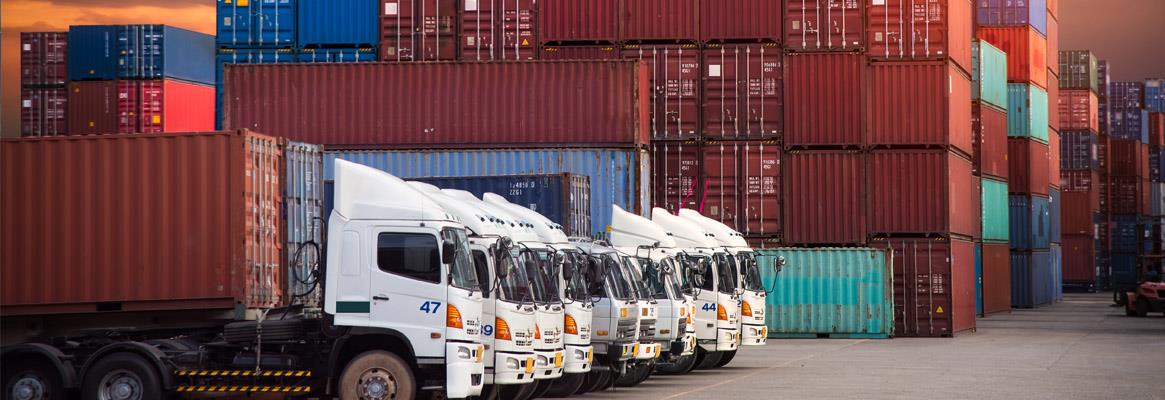Global ocean and air freight prices continue to rise. Due to initial Covid related restrictions and now demand growing faster than supply, shortages in freight industry will likely slow trade recovery going forward. Capacity constraints in the freight industry will only be resolved gradually, adding to the challenges facing the global trade.
Global container traffic and trade volumes are only expected to be lifted gradually. While, container traffic increased y/y in April-21 on major ports in China and in the US, trade volumes declined m/m. In mid-April, container throughput at China's key ports increased 17.8 per cent y/y. While, throughput at the Los Angeles port increased 37 per cent y/y in Apr-21 in TEU (Twenty Foot Equivalent Unit) terms, it declined relative to the previous month by 1.1 per cent. The trade volumes and shipping traffic have largely been affected due to pandemic induced shortages in containers and port congestions.
Container prices continue to rise in May-21
Container throughput and trade volumes across major global ports are expected to be relaxed only in the second half of this year. DHL's Ocean Freight Market Update for May-21 reflected that congestion at major US and European ports had increased scheduling to more than a month in advance. Similar congestions in Asia Pacific and strong demand for cargo coming out of this region have further added to the container shortages and have led to rising container prices. The situation was further aggravated by the Suez Canal fiasco in March-21, which increased cargo delays further, and pushed prices to record highs. Global Container Index published by Drewry Supply Chain Advisors has moved from USD 1,542.2 a year ago, to USD 6,135.4 as per latest available data in May-21. The composite price index for a 40 ft container has jumped more than USD 1,222 since last month. Prices on all the major trade routes have jumped up sharply since mid-April, reflecting increasing port congestions and recovery in exports for all the major economies.
The 40 ft container prices for Shanghai-Rotterdam route remained the highest at USD 9,865 as of May 20, climbing 17.8 per cent in just two weeks. Price for the Shanghai-Genoa and Shanghai-New York route followed at USD 9,477 and USD 7,366 as of May 13, rising 11.1 per cent and 5.1 per cent respectively in the last two weeks. The prices are expected to rise further as demand recovery is immediate but increasing terminals on the ports and putting more containers out there will take more time. Additionally, the peak time for shipping industry starts by mid-August and runs till end of October. Prices of all major industrial commodities like copper, iron ore and aluminum will also likely remain elevated.
Trade value rising faster than volumes
Global import demand has been rising steadily as major economies ease Covid related restrictions on movement and economic activity. US external trade rose sharply in March-21 in nominal terms. US nominal exports grew 11.9 per cent y/y in March-21 to USD 142.9 billion and nominal imports grew 20.8 per cent y/y. In real terms, however, exports only grew 4.4 per cent and imports grew 14.8 per cent reflecting volumes growing slower than prices. China's exports in April-21 grew by 22.2 per cent y/y in CNY terms to reach CNY 1,712.8 billion, while producer prices in the Chinese economy saw the largest y/y rise of 6.8 per cent in over 3 years. This implies that a large part of the rise in value of global trade for major economies could very well be the continuous rise in commodity prices.
Maritime trade and the shipping industry are a crucial part of global trade and economy. In volume terms, maritime trade was 79.7 per cent of global merchandise trade in 2019. Any disruptions to movement of shipping cargoes will have a tremendous impact on global trade and economy. Longer the disruptions to shipping, longer will be the loss to overall trade. Due to COVID-19 related restrictions, the number of container ships being sent across the world had sharply reduced last year, reducing movement of containers to ports where they were required the most. Resulting shortage of container boxes, and empty containers also waiting to be shipped back, led to their prices skyrocketing. Additionally, Covid related restrictions impacted the capacity at the ports as well as the staff available to handle the cargoes, creating further delays in loading and unloading of the containers and sending them back. With large economies like China opening up significantly, demand shadowed supply substantially. The Chinese New Year contributed to the tremendous rise in demand and further widened the demand-supply gap. With US also opening up and the tremendous stimulus payments contributing to consumption rise, the demand-supply gap may likely rise further. Major shippers like Hapag-Lloyd have fastened loading and unloading times to ease the pressure on movement of cargoes and container prices, but the larger issue of overall capacity will largely remain.
Competing air cargo services also facing vast demand-supply gap
Air freight, a direct competitor to ocean freight, has also seen simultaneous rise in rates. Baltic Exchange's Air Freight Index for all major routes has etched up again after subsiding mid of last year. Baltic Exchange's market summary shows that HK-US route has had the most impact on freight rates, rising to USD 8.56/kg in April, up from USD 4.91/kg on March 01, rising 29 per cent since last year and 153 per cent since 2019. The market capacity is seen to be tight, and the HK-US freight rate is expected to reach USD 8.81/kg in May-21. The HK-EUR route freight rate has also moved to USD 4.89/kg, although down 31 per cent from 2020 but up 92 per cent since 2019. The route between Europe and US remains volatile, with recent downward movement in freight rates. London Heathrow to US saw a rise of 32 per cent in freight rates in April, however on Frankfurt to US, rates were down by 3 per cent relative to 2020. Overall, the air cargo market remains volatile and freight rates are expected to rise further, as demand is likely to continue to dominate capacity.
Trade volumes expected to recover only gradually
With capacity restrictions on the shipping and the aviation industry, global trade volumes might see gradual pickup only when COVID-19 curbs on movement and industrial activity don't return. DHL's Ocean Freight Market Update May-21 suggests that rate increases are expected to continue in Jun-21 with high uncertainty for months ahead as majority of shippers are only scheduling orders for end-June. The space and container shortages could only be expected to relax and prices to stabilise in Q3 2021. DHL informs that capacity improvements over the month of April were not substantial. Capacity expansion on the side of the shippers might be unlikely as global container ship fleet has been declining consistently over the years and the current price hike has helped expand their balance sheets tremendously. Research by Danish Ship owner's Association (Danske Rederier) shows that ratio of new ships ordered globally to the existing fleet has reached its lowest since 1989, reaching 7 per cent in 2020. The global order book for all types of vessels such as dry bulk, crude oil tankers, product tankers, and containers, had peaked around the Global Financial Crisis and have been declining since.
Although global commercial aircraft deliveries by Airbus and Boeing have increased over the years, data from CAPA Fleet Database shows that the order backlog with the largest aircraft manufacturers was equivalent to almost 9.8 years of production in 2017. The two firms cumulatively delivered the largest number of commercial aircrafts historically (1,740 deliveries) in 2017, putting the global fleet at 31,600. Global deliveries have however decreased since, and in 2020, was only 733, taking the backlog to 12,181 aircrafts, increasing it to 16.6 years of production. Many airliners cancelled orders in 2020, bracing for reduced demand due to the COVID-19 pandemic. However, two airline producers have started increasing production with expectations of demand revival in the coming months and demand in global tourism.
The constraints on global aviation and shipping industry have been in the making since the last decade, as global trade has been slow to recover post the Global Financial Crisis. With demand recovering faster than supply post COVID-19, prices for both sea and air cargo are expected to remain elevated, which is likely to hinder trade volumes. Only if demand recovery remains consistent and trade volumes continue to grow faster, can we expect both the shipping companies and the airliners to place larger orders for new fleet. Till then, we will perhaps have to brace for some inflation, and in the process, build enough confidence in the global recovery.











Comments